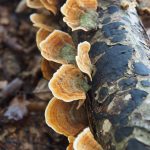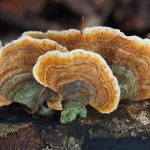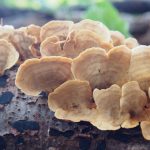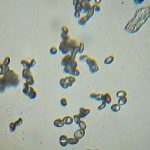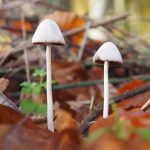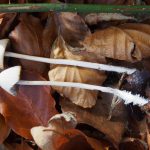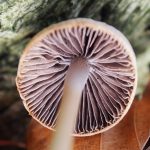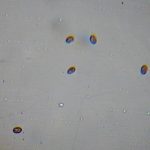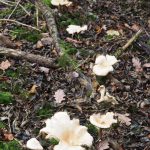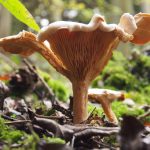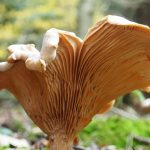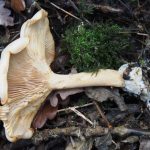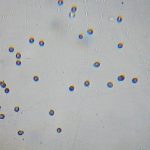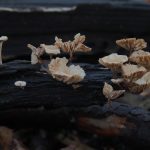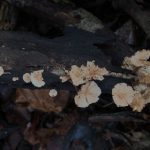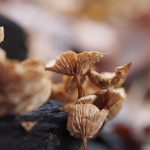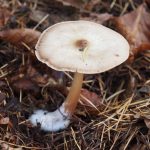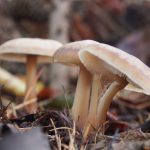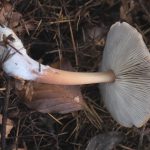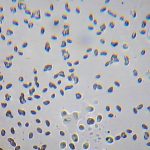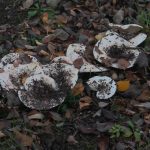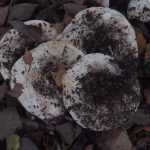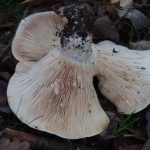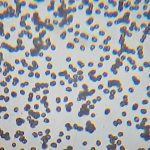1.
Coprinellus hiascens.
-
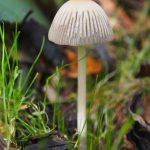
- 1. Coprinellus hiascens
-
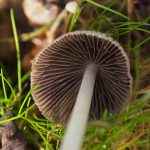
- 1. Coprinellus hiascens
-
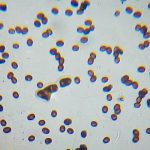
- 1. Coprinellus hiascens
Growing on soil amongst grass in very open woodland. Several scattered singly. Cap 2cm, stem 7cm. Slight fungus smell. Very fragile. Really could be any one of many similar looking mushroom. Opting for C.hiascens because it looks right, has the right spores and habitat is exactly correct. ID is possible. Spores 7-9µ x 5.5-6.5µ.
2.
Yellow Brain (
Calocera viscosa).
-
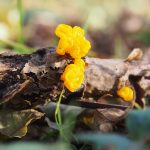
- 2. Yellow Brain
-
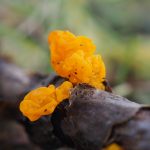
- 2. Yellow Brain
Growing on ash tree twig. A few clumps on the twig. Around 1cm across. No smell.
3.
Conocybe exannulata.
-
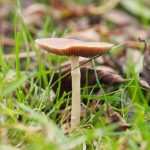
- 3. Conocybe exannulata
-
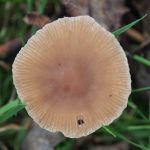
- 3. Conocybe exannulata
-
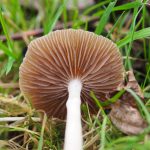
- 3. Conocybe exannulata
-
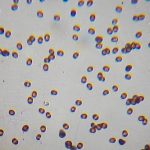
- 3. Conocybe exannulata
Growing in earth amongst grass near to ash tree. Two. Cap 3cm. No smell. Small bulge in stem. Identification is somewhat doubtful, but this is the closest I can find. ID is wild guess. Spores 7-8µ x 5-6.5µ.
4. Unidentified.
-
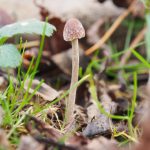
- 4. Unidentified
-
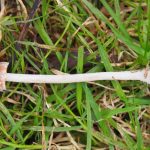
- 4. Unidentified
-
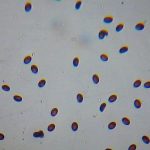
- 4. Unidentified
Growing in earth amongst grass. Several scattered around. Cap up to 7mm across. No smell. I've given up trying to identify these as they all looked like young specimens which doesn't give enough information. Spores 9-10µ x 5.5-7.5µ.
5.
Candlesnuff Fungus (
Xylaria hypoxylon).
-
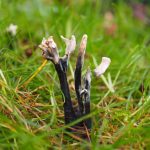
- 5. Candlesnuff Fungus
-
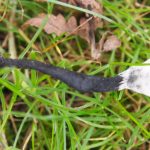
- 5. Candlesnuff Fungus
Appeared to be growing from earth but think they were on buried wood as they were very firmly rooted. A few scattered around. Up to 4cm high. No smell. This must be Candlesnuff, although I've not heard of it ever growing on buried wood rather than just wood.
6.
Iodine Bonnet (
Mycena filopes).
-
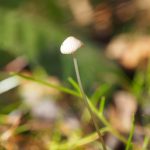
- 6. Iodine Bonnet
-
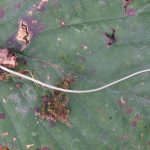
- 6. Iodine Bonnet
Growing on buried twig. Two. Cap around 5mm, stem up to 6cm. No definite smell. Identification is very tentative. There was no iodine smell that I noticed, and the size is rather small. But the woolly base and long stem are right. The caps I collected didn't produce spores which doesn't help. ID is wild guess.
7.
Bitter Oysterling (
Panellus stipticus).
-
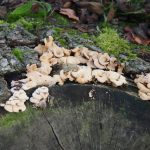
- 7. Bitter Oysterling
-
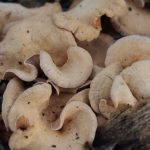
- 7. Bitter Oysterling
-
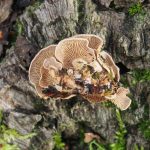
- 7. Bitter Oysterling
-
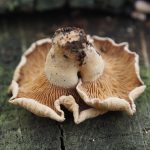
- 7. Bitter Oysterling
-
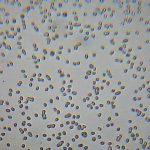
- 7. Bitter Oysterling
Growing on fallen trunk. Many large clusters. Rosettes up to 3cm across. Fungusy smell. Didn't taste them, but next time I will to see how bitter they are. Short rudimentary stems. Spores are actually supposed to be smaller than I measured, but my measurement technique probably overestimates the size of small spores a bit. Sporeprint Not enough to be sure, but whitish. Spores 3.5-5µ x 2.5-4µ.
8.
Funeral Bell (
Galerina marginata).
-
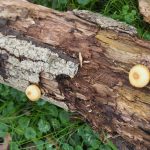
- 8. Funeral Bell
-
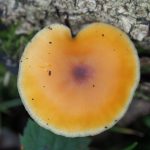
- 8. Funeral Bell
-
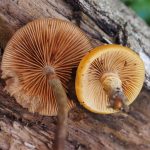
- 8. Funeral Bell
-
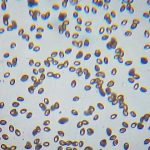
- 8. Funeral Bell
Growing on rotting oak branch. Several scattered. Cap up to 3.5cm. Slight fungus smell. Did not taste, fortunately, as deadly poisonous. Hemispherical. ID is almost sure. Sporeprint Pale reddish brown. Spores 7-9µ x 5-6µ.
9.
Trooping Funnel (
Clitocybe geotropa).
-
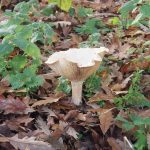
- 9. Trooping Funnel
-
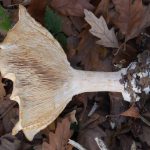
- 9. Trooping Funnel
-
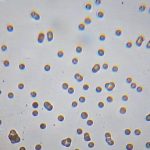
- 9. Trooping Funnel
Growing through leaf litter under oak in open woodland. Two or three scattered. Cap 14-20cm. Mild sweet fungusy smell. Sporeprint White. Spores 6-7.5µ x 5.5-7µ.
10.
Horse Mushroom (
Agaricus arvensis).
-
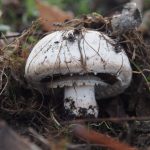
- 10. Horse Mushroom
-
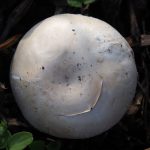
- 10. Horse Mushroom
-
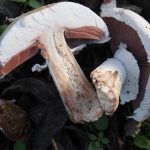
- 10. Horse Mushroom
-
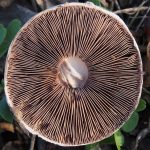
- 10. Horse Mushroom
-
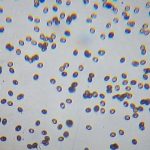
- 10. Horse Mushroom
Growing through grass under large ash tree in open woodland. Several scattered in a group. Cap 3.5-8cm but mostly young. Slight smell. I didn't think these were Horse Mushrooms at first, due to lack of almondy smell, but this now seems the most likely identification. ID is best guess. Sporeprint Dark chocolate brown. Spores 6-7.5µ x 4.5-5.5µ.
11.
Lepista sordida.
-
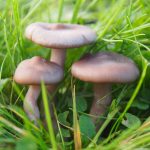
- 11. Lepista sordida
-
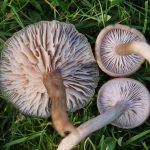
- 11. Lepista sordida
-
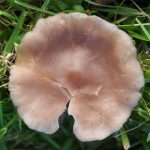
- 11. Lepista sordida
-
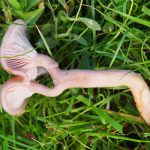
- 11. Lepista sordida
-
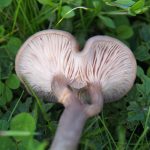
- 11. Lepista sordida
-
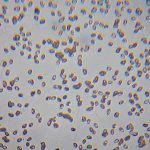
- 11. Lepista sordida
Growing in grass in large clearing in wood. Several small groups. Cap up to 4cm. No smell. Look at the wierd forking stem on one of the specimens - never seen that before! ID is almost sure. Sporeprint Not enough to be sure, but whitish. Spores 5-6.5µ x 3.5-4.5µ.
12.
Macrolepiota mastoidea.
-
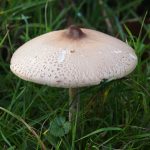
- 12. Macrolepiota mastoidea
-
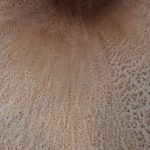
- 12. Macrolepiota mastoidea
-
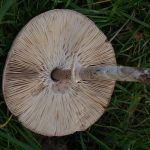
- 12. Macrolepiota mastoidea
-
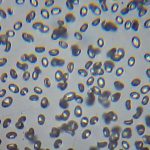
- 12. Macrolepiota mastoidea
Growing on earth amongst grass in open woodland. A few, scattered separately through the wood. Cap around 10.5cm. Stem 12cm. No smell. Guess what the latin name means! Sporeprint White. Spores 10-13.5µ x 6.5-9µ.
13.
Lilac Bonnet (
Mycena pura).
-
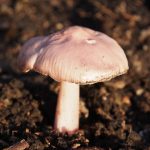
- 13. Lilac Bonnet
-
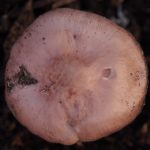
- 13. Lilac Bonnet
-
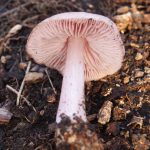
- 13. Lilac Bonnet
-
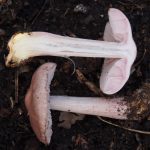
- 13. Lilac Bonnet
-
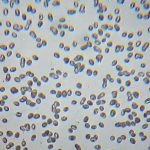
- 13. Lilac Bonnet
Growing on earth in open mixed woodland. Two. Cap 3.5-4cm. Raw potato or radish (which smell the same to me). This is my most recorded mushroom species, so I'll give a miss next time. It's hard to ignore as it's so colourful. ID is almost sure. Sporeprint White. Spores 5.5-8µ x 4-5.5µ.
14. Unidentified.
-
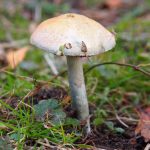
- 14. Unidentified
-
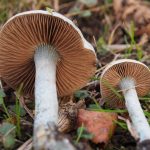
- 14. Unidentified
-
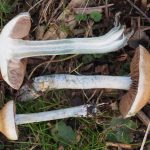
- 14. Unidentified
-
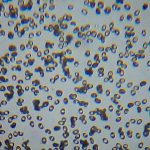
- 14. Unidentified
Growing on earth in woodland clearing. Two or three. Cap 3.5cm-5cm. Stem up to 7cm. No smell. Cap has gold/brown tinge, stem has hint of blue. Despite its distinctive look, I just can't identify this. Could be a Pholiota or a Psilocybe but I can't get any of them to fit, even remotely. Sporeprint Terracota. Spores 5.5-8µ x 4-5.5µ.
15.
Cheilymenia granulata.
-
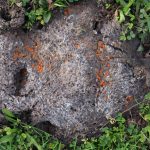
- 15. Cheilymenia granulata
-
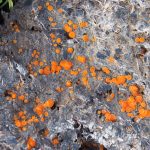
- 15. Cheilymenia granulata
-

- 15. Cheilymenia granulata
Growing on cow pats. Large swarms of small discs. Each disc up to 2mm across. Not in any of my books and not very interesting to look at until magnified, but then starts to take on an almost extraterrestrial appearance. ID is almost sure.
16.
Hat Thrower Fungus (
Pilobolus).
-
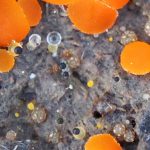
- 16. Hat Thrower Fungus
Growing on cow pat. Fraction of a millimetre across. Black dot on top of sac of fluid on a stalk. Can't see a stalk below the fluid sac, due to angle of shot, but presumably it's there.


